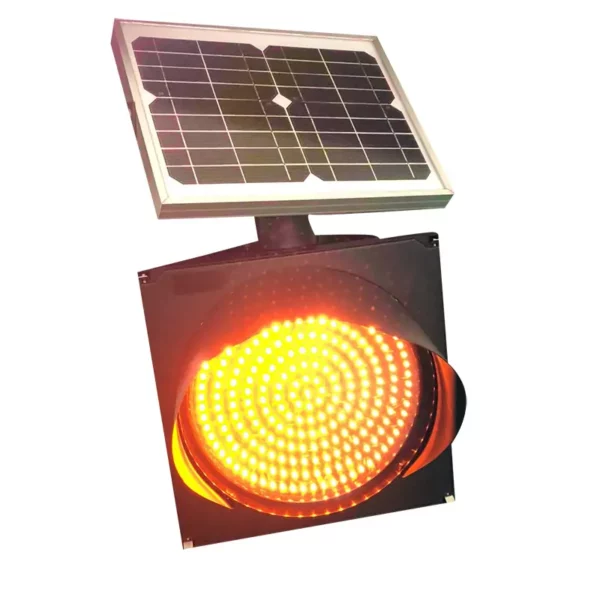Solar Traffic Lights are signaling devices powered by solar panels that are installed at road intersections, pedestrian crossings and other locations to control traffic flow. They use a universal color code to assign right-of-way to road users by using lights in standard colors (red – amber / yellow – green).
Features
Most solar-powered traffic lights use LEDs because they are more reliable [1] and offer advantages over other lighting devices such as CFLs because they are more energy efficient, last longer, and switch on and off faster. A solar-powered traffic light consists of an enclosure that houses the batteries and control panel circuitry. Existing traffic lights can also be upgraded to use auxiliary power from solar panels for use during power outages. Other parts of a solar traffic light include a charge controller that controls the charging and discharging of the batteries and a countdown timer that displays the amount of power remaining before the batteries are fully discharged.
The Benefits
Solar traffic lights are self-sufficient as they do not require an external power source.
They are easy to set up and operate.
They require little maintenance as there are no moving parts
Cons
There is a higher risk of theft because of the relatively high cost of the equipment.
Snow or dust plus moisture can accumulate on horizontal PV panels, reducing or even stopping energy production.
Rechargeable batteries need to be replaced several times over the life of the lamp, which can increase the total lifetime cost of the lamp. Charging and discharging cycles of the batteries are important considering the overall cost of the project.

